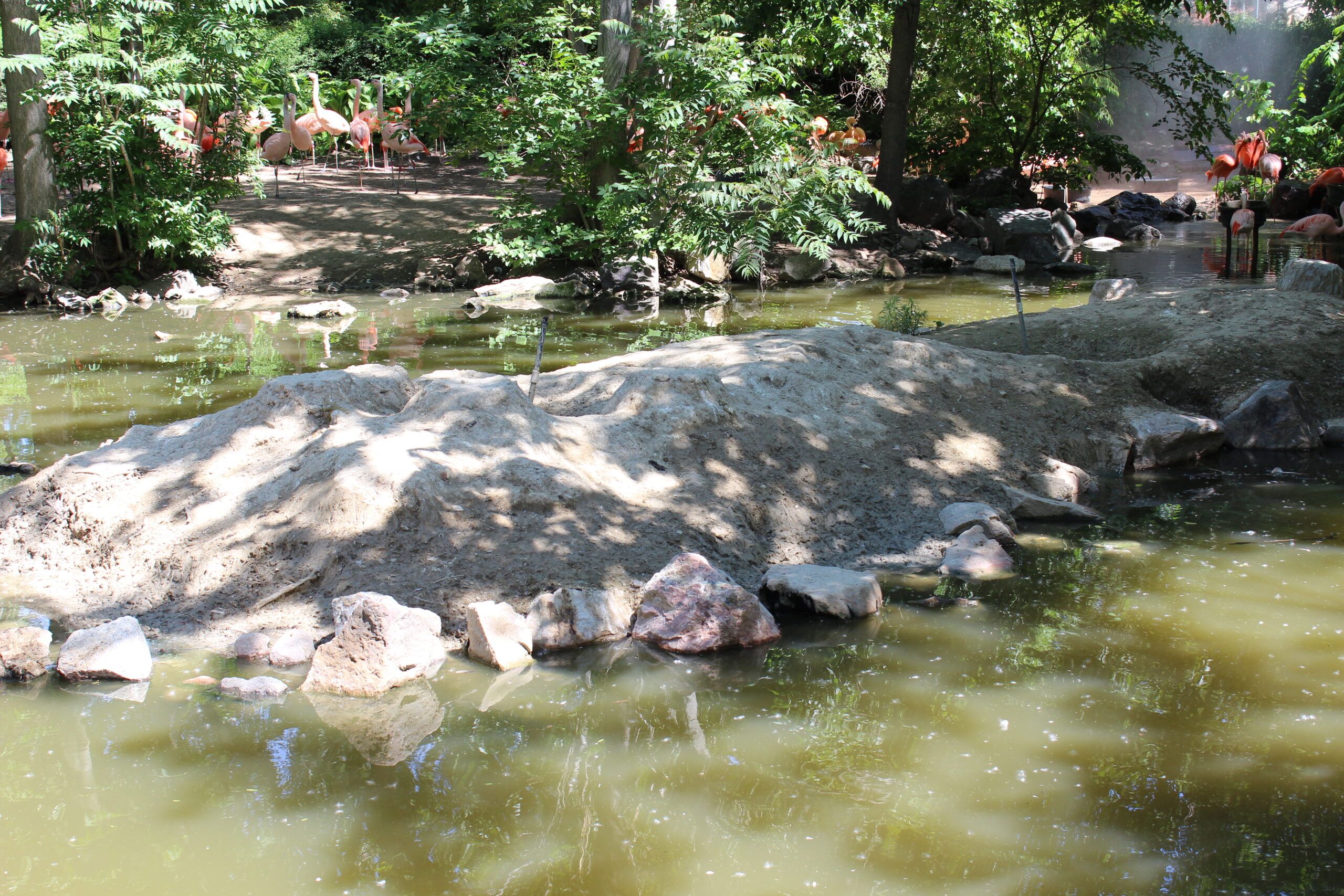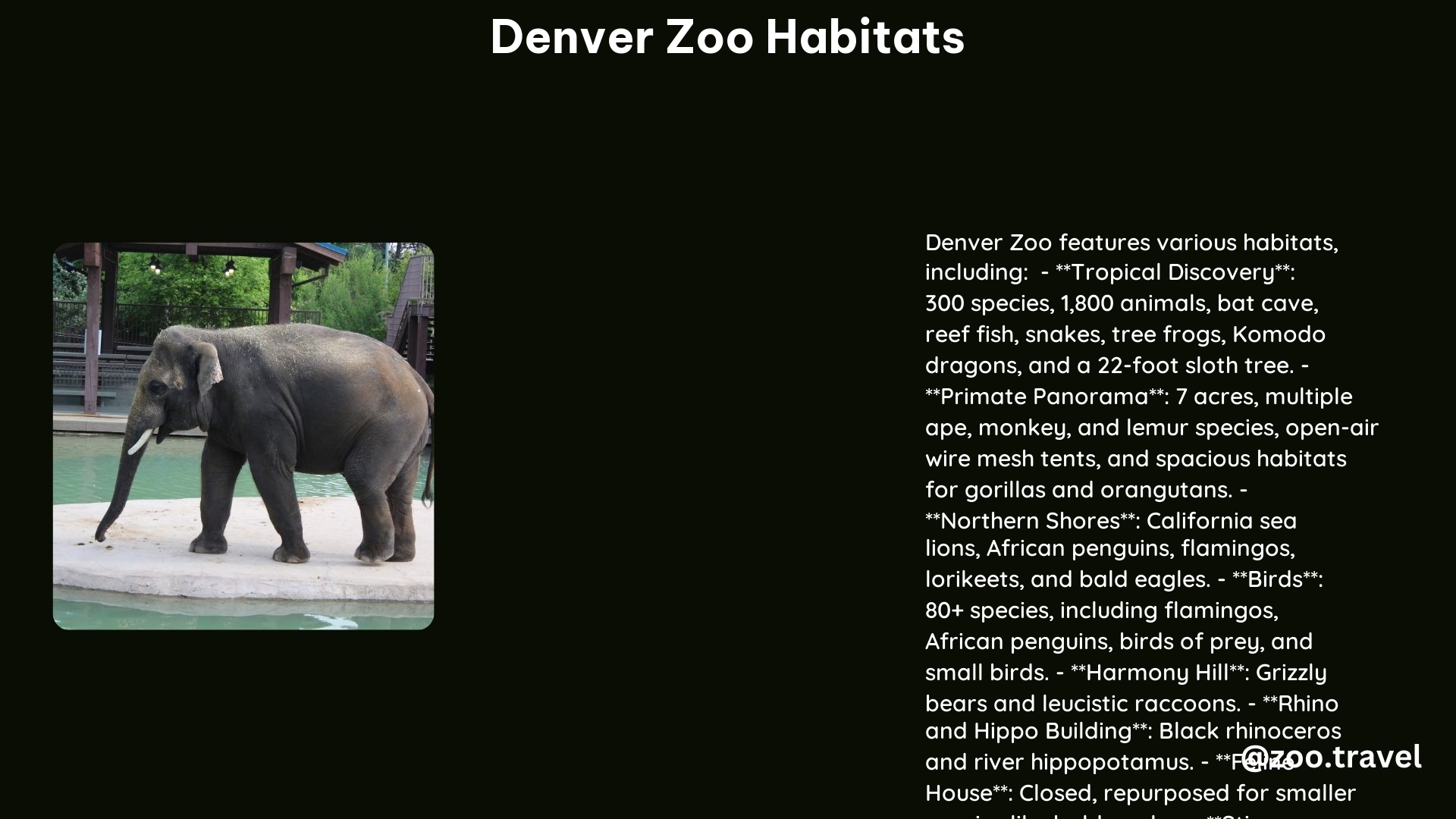Denver Zoo is a renowned zoological park that offers visitors a unique opportunity to immerse themselves in the diverse habitats of the animal kingdom. From the lush tropical rainforests to the rugged mountain landscapes, the zoo’s carefully curated habitats provide a captivating and educational experience for all who visit. In this blog post, we’ll delve into the key habitats of Denver Zoo and uncover the fascinating features that make each one a must-see destination.
Tropical Discovery: A Journey into the Jungle

Stepping into the Tropical Discovery habitat is like being transported to a lush, verdant jungle. This expansive exhibit is home to nearly 300 species and 1,800 individual animals, each with its own unique adaptations and behaviors. Visitors can explore the bat cave, marvel at the vibrant reef-dwelling fish, and come face-to-face with the powerful Komodo dragons. The highlight of this habitat is undoubtedly the 22-foot sloth tree, where visitors can observe the slow-moving but captivating sloths up close.
Northern Shores: A Coastal Oasis

The Northern Shores habitat is one of the most visually striking areas of the Denver Zoo. Featuring a panoramic view of the zoo’s landscape, this habitat is home to a diverse array of coastal species, including California sea lions, African penguins, flamingos, lorikeets, and bald eagles. Visitors can enjoy daily sea lion demonstrations, where they can learn about these charismatic marine mammals and their importance to the ecosystem.
Primate Panorama: Connecting with Our Closest Relatives
Spanning seven acres of lush, forested land, the Primate Panorama habitat allows visitors to connect with multiple species of ape, monkey, and lemur. The habitat features open-air wire mesh tents that soar four stories high, providing ample space for the animals to roam freely. Visitors can observe the majestic Western lowland gorillas and the intelligent Sumatran orangutans in their separate, spacious habitats.
Australian Animal Habitat: Discovering the Wonders of Down Under
The newly opened Australian Animal Habitat, known as “Down Under,” offers an immersive pathway experience where visitors can get up close to friendly red-necked wallabies and red kangaroos. This habitat also features the Endangered Huon tree kangaroos and the impressive Southern cassowaries, providing visitors with the opportunity to learn about these unique animals and their importance to Australia’s First Nations people.
Harmony Hill: Coexisting with Wildlife
The Harmony Hill habitat is designed to resemble a fictional state park and is home to grizzly bears. Nearby, another habitat is designed to resemble a backyard, illustrating and providing solutions for human-wildlife conflict. This habitat is home to two rescued leucistic raccoons, offering visitors a glimpse into the challenges and opportunities of coexisting with urban wildlife.
Rhino and Hippo Building: Preserving Iconic Species
The Rhino and Hippo Building is a longstanding feature of the Denver Zoo, originally opened in 1959 as the Pachyderm Habitat. This building is now home to the majestic black rhinoceros and the powerful river hippopotamus, providing visitors with the chance to observe these iconic species up close.
Feline House: Evolving Habitats
The Feline House, built in 1964, has undergone significant changes over the years. It is now closed and has been renovated to make way for Stingray Cove and outdoor yards for smaller species like bald eagles, showcasing the zoo’s commitment to continuously improving and adapting its habitats to provide the best possible care for its animal residents.
Denver Zoo’s diverse habitats offer a wealth of opportunities for visitors to connect with the natural world and learn about the importance of conservation. Whether you’re fascinated by the tropical rainforest, captivated by the coastal species, or intrigued by the primates, there’s something for everyone to explore and discover at this remarkable zoological park.
